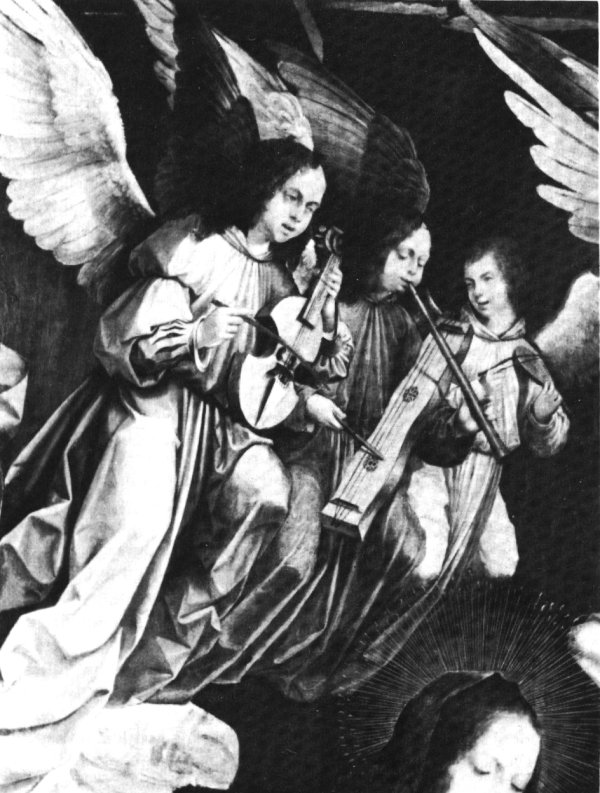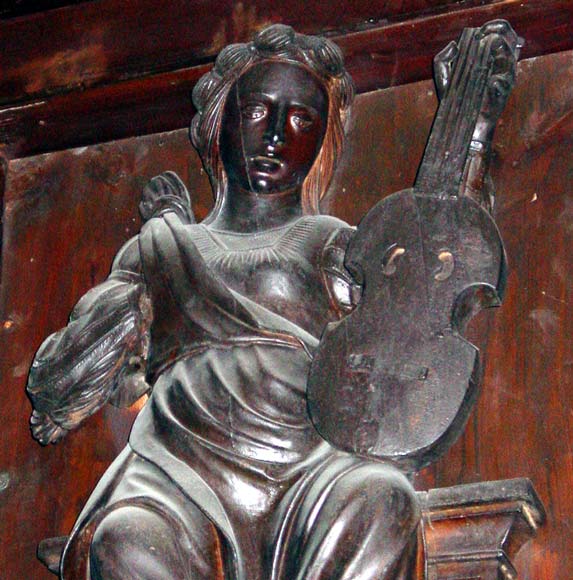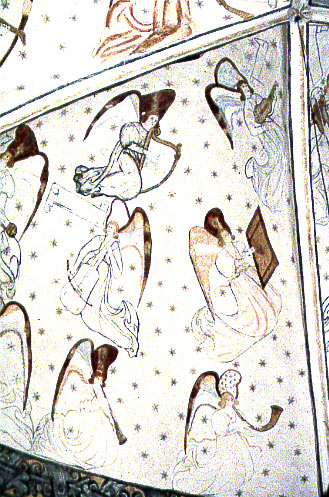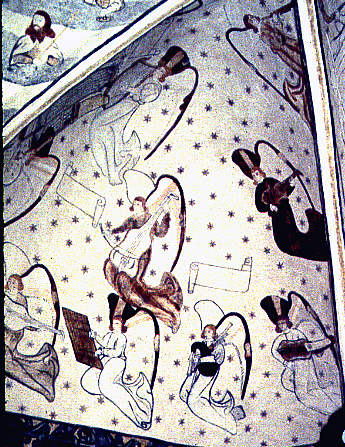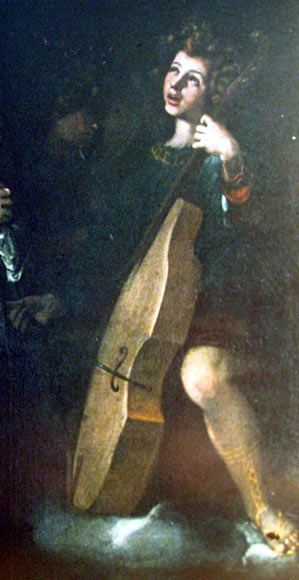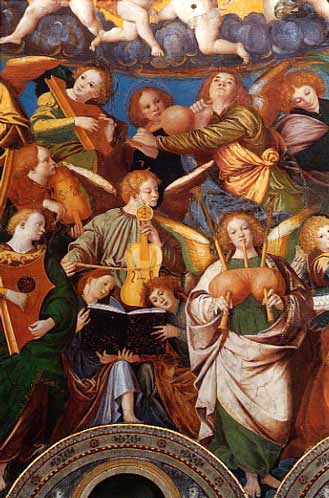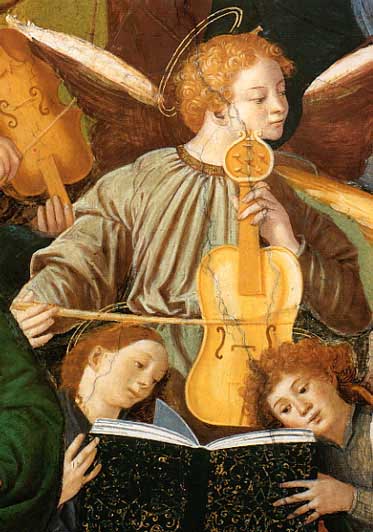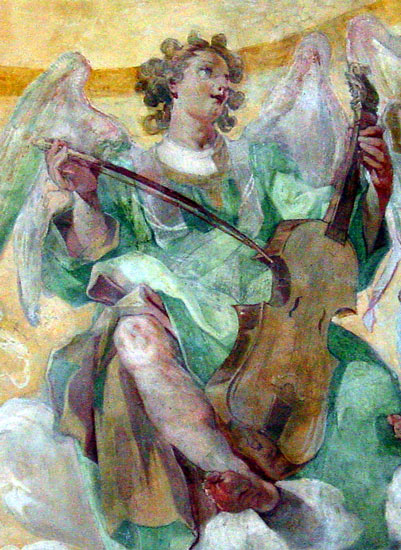The Oldest Viola da gamba in History
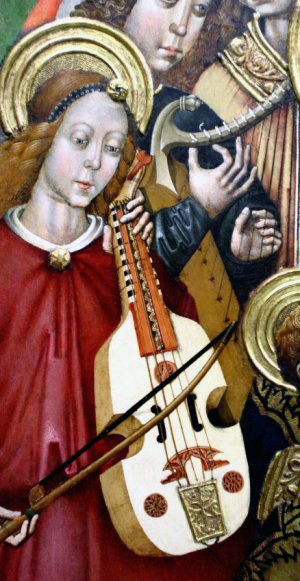
|
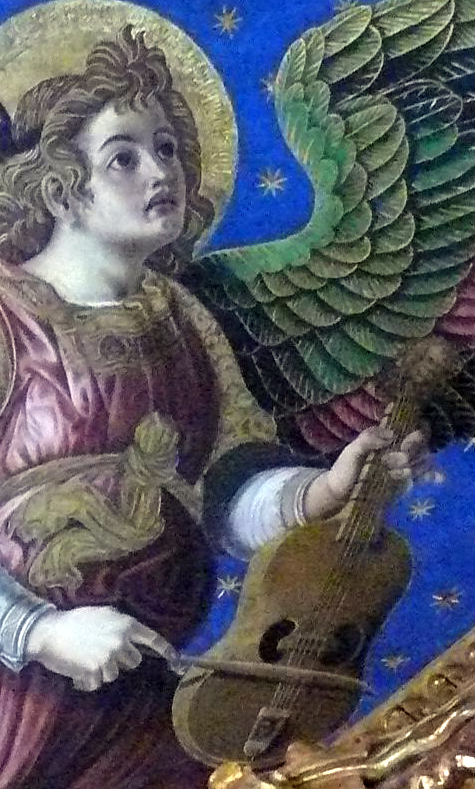
|
Viola da gamba, Valencia Cathedral
Francesco Pagano & Paolo di San Leocadio, 1472 This is part of a large set of paintings on the vaulted ceiling of the Cathedral of Valencia which was recently (2004) rediscovered, having been conceiled over a period of 300 years by a second, Baroque ceiling subsequently built below it, which has now been removed, unveiling these treasures. This painting may now be considered the first iconographical evidence of a viola da gamba in history. The angel is approximately 4 meters tall. Both painters came from Italy, Pagano from Naples, di San Leocadio from Reggio in Lombardy. |
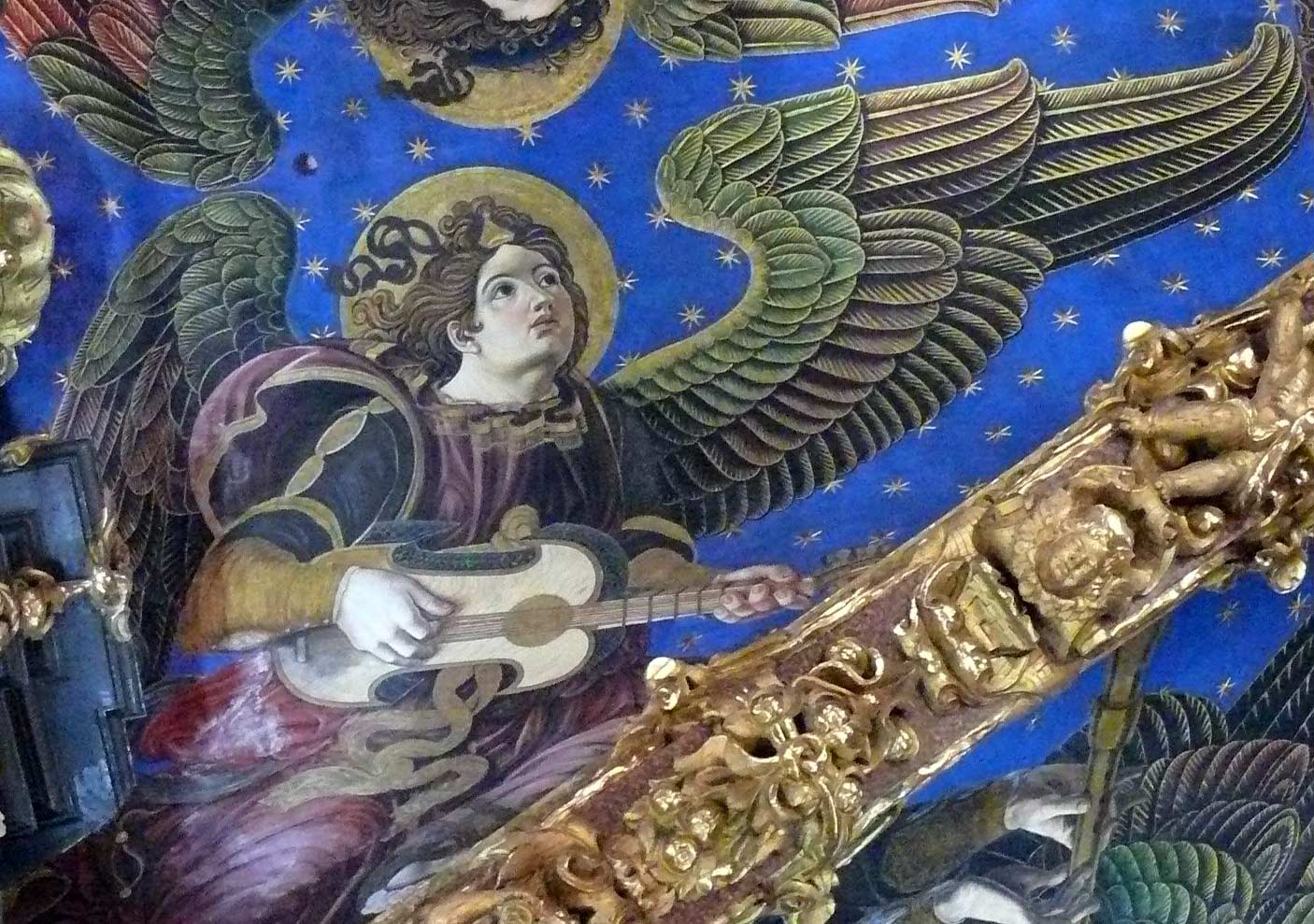
The viola da mano player from the same frescoes at the Valencia Cathedral
Madre de Deu Retablo in Spanish Viola da gamba ca. 1500 (Valencia Cathedral)
Two violas da gamba from the frescos of 1562-5 in the Church of Rynkeby, Denmark
attesting to the fast dissemination of the large Spanish violas in the 16th C.
(c) Index of Christian Art, Mills-Kronborg Collection
Spanish Viola da gamba of the 17th C. (Valencia, Museum)
Gaudenzio Ferrari: Frescoes of the Cathedral of Saronno (ca. 1535)
showing an early viola da gamba in the form of a vihuela (guitar)
(see also: The earliest violins)
Viola da gamba on the ceiling fresco of St. Maria Trastevere in Rome
Present exhibition: Castello di Duino
On the Origin of the Viola da gamba(English), (German)
The Viola da gamba in Italy
The Italian Renaissance viols:
Music for Charles V and Philip II
The Viola da gamba in England
The Viola da gamba in Austria
The Viola da gamba in Germany
The Viola da gamba in France
THE VIOLA DA GAMBA: RESOURCES INDEX
View our Galleries:
The Collection
The Exhibitions
Our Activities
updated21.06.2011
